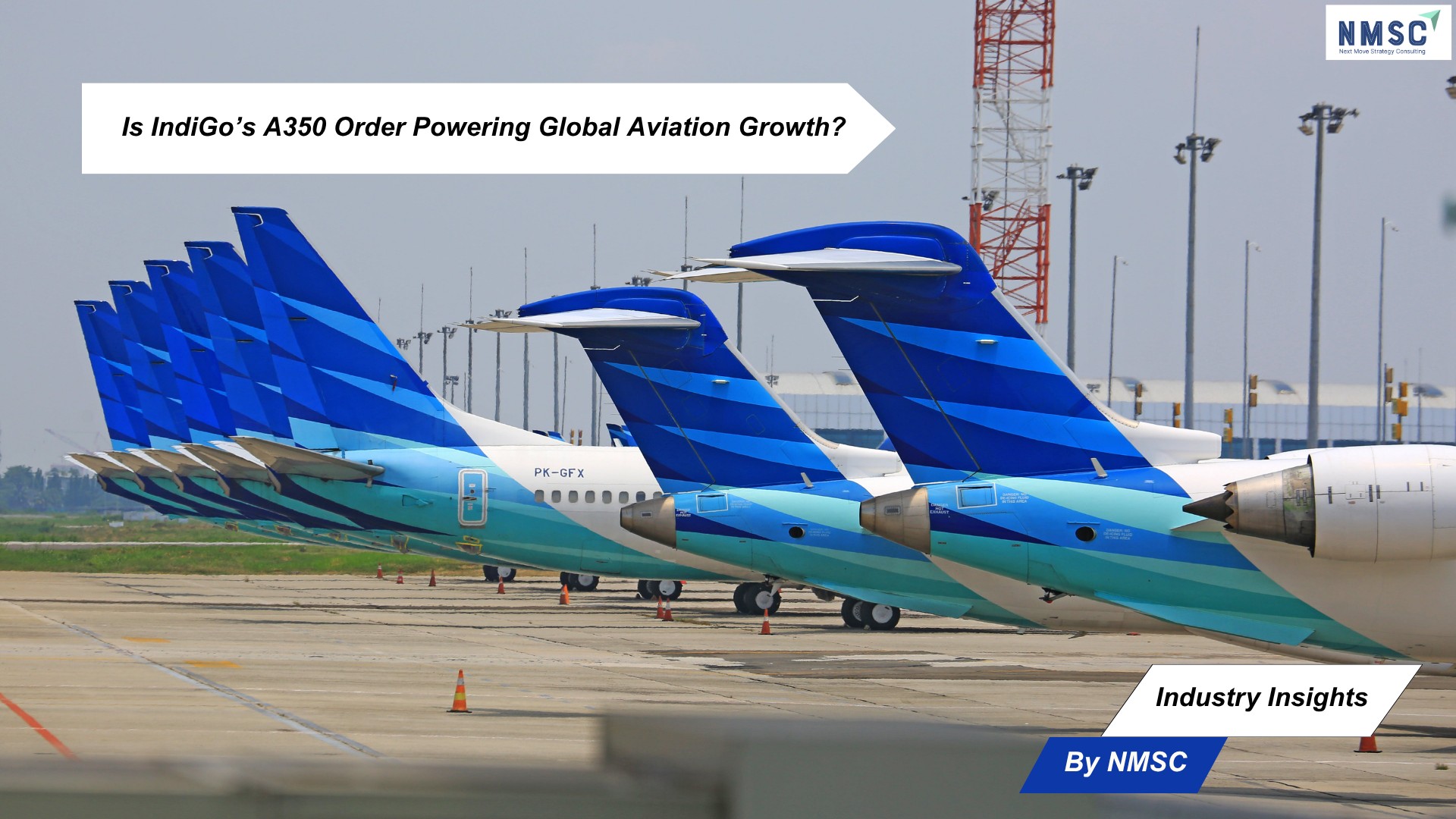Industrial Robotics Market is Expected to Reach USD 88.66 billion by 2030
Published: 2025-10-31
Rising Robot Adoption, Collaborative Solutions, and Technological Innovation are Driving the Industrial Robotics Market Growth
According to the Next Move Strategy Consulting, the global Industrial Robotics Market size was valued at USD 41.22 billion in 2024 and is expected to reach USD 48.75 billion by 2025. Looking ahead, the industry is projected to expand significantly, reaching USD 88.66 billion by 2030, registering a CAGR of 12.7% from 2025 to 2030. In terms of volume, the market recorded 541 thousand units in 2024, with forecasts indicating growth to 653 thousand units by 2025 and further to 1287 thousand units by 2030, reflecting a CAGR of 14.5% over the same period.
The increasing deployment of collaborative robots (cobots) and autonomous mobile robots (AMRs) is propelling the market. Unlike traditional Industrial Robotics, cobots can safely work alongside human operators, enabling manufacturers to optimize labor, enhance productivity, and maintain workplace safety without extensive retooling or protective infrastructure.
Similarly, AMRs are transforming material handling and intralogistics by providing flexible, scalable automation for warehouses and production floors. Adoption is further fueled by advancements in AI, machine vision, and fleet management software, allowing seamless integration into existing operations. Companies investing in these solutions benefit from faster deployment, improved operational efficiency, and reduced labor dependency, while industries experiencing labor shortages or rapid demand fluctuations see these technologies as critical enablers for scalable, adaptive, and cost-effective automation.
Despite the growing benefits of industrial robotics, adoption is often slowed by high initial investments and the challenges of integrating new systems with existing production lines. Even as per-unit prices decline in some regions, total project costs, potential downtime, and custom engineering requirements can delay implementation.
Additional complexities arise from harmonizing safety standards, network protocols, and APIs across multi-vendor setups. To address these barriers, vendors are offering pre-validated retrofit kits, open APIs, and certifiable safety modules that simplify deployment, while buyers’ pilot short-term performance SLAs to reduce risk. Public funding programs and workforce training initiatives also help lower adoption hurdles, particularly in underserved regions.
However, software, services, and Robot-as-a-Service (RaaS) models are emerging as key investment opportunities because they generate recurring revenue and expand the customer base beyond traditional hardware sales. As robotics hardware becomes increasingly commoditized, competitive advantage shifts toward software capabilities, uptime assurances, and outcome-based billing. Platforms that support multi-vendor interoperability, provide robust analytics, and enable easy deployment allow companies to convert single-unit sales into enterprise-wide contracts with ongoing revenue streams. Demonstrable service-level agreements (SLAs) and transparent usage analytics help scale pilots into full fleets efficiently, making software, services, and RaaS critical levers for growth, profitability, and long-term strategic value in the industrial robotics market demand.
Curious about the Industrial Robotics Market? Grab a FREE Sample Now!
According to the report, the top players operating in the industrial robotics industry include ABB Ltd., Fanuc Corporation, Yaskawa Electric Corporation, Mitsubishi Electric Corporation, KUKA AG, Denso Wave Inc., Omron Corporation, among others. These companies are implementing strategies such as strategic partnerships and targeted product launches across different countries and regions to sustain their market leadership.
The industrial robotics market trends has recently experienced significant strategic activity, highlighted by major investments, product launches, and technological advancements. Leading companies are expanding their global presence, strengthening distribution and service networks, and investing in innovative solutions such as AI, collaborative robots, and autonomous systems to maintain competitiveness. These initiatives not only enhance their product portfolios but also underscore the increasing importance of software integration, operational efficiency, and customer-centric solutions in driving market growth and shaping the future of industrial automation worldwide.
A strong example of this trend is Yaskawa Electric, who, in June 2025, announced a USD 180 million investment to build an 800,000 sq. ft. campus in Franklin, Wisconsin. The facility consolidates its U.S. operations, expands training programs, and increases robotics and semiconductor production capacity. This move strengthens local manufacturing capabilities while fostering workforce development in advanced automation, supporting the company’s long-term growth strategy in North America.
Meanwhile, ABB revealed plans to spin off its Robotics division into a separately listed company by Q2 2026. The decision aims to sharpen strategic focus, unlock shareholder value, and accelerate research, development, and commercialization of robotics-specific technologies. By creating an independent entity, ABB seeks to enhance agility and competitiveness in the rapidly evolving market.
Also in April 2025, Omron formed a dedicated robotics organization to enhance customer-focused solutions, streamline global proof-of-concept centers, and integrate AI and IT capabilities. This initiative reflects Omron’s commitment to positioning robotics as a core growth pillar and strengthens its presence in collaborative and industrial automation segments.
In November 2024, FANUC launched the M-950iA robot, capable of handling payloads up to 500 kg. Designed for large-part manufacturing and electric vehicle battery-tray assembly, the M-950iA reinforces FANUC’s leadership in high-payload applications and addresses growing demand in heavy manufacturing and EV sectors.
Similarly, Mitsubishi Electric introduced the MELFA FR PLUS series, featuring enhanced drive functions and expanded force-sensor capabilities. Targeted at flexible, force-sensitive tasks such as assembly and inspection, the series enables manufacturers to implement adaptable automation without extensive retooling, improving operational efficiency, precision, and scalability.
Key Insights from the Industrial Robotics Market Report:
-
The information related to key drivers, restraints, and opportunities and their impact on the industrial robotics market is provided in the report.
-
The value chain analysis in the market study provides a clear picture of the roles of each stakeholder.
-
The competitive analysis of the key players in the industrial robotics market share is provided in the report.
About the Author
 Mayurima Roy is a seasoned researcher with over two years of experience, specializing in various industry verticals such as elevator market, recycling market, and construction electronics. With a strong passion for writing, she views blogging as a valuable platform to share her industry insights and expertise. Outside of tracking market trends and developments, Mayurima enjoys crafting, cooking, and exploring her creativity through photography.
Mayurima Roy is a seasoned researcher with over two years of experience, specializing in various industry verticals such as elevator market, recycling market, and construction electronics. With a strong passion for writing, she views blogging as a valuable platform to share her industry insights and expertise. Outside of tracking market trends and developments, Mayurima enjoys crafting, cooking, and exploring her creativity through photography.
About the Reviewer
 Sikha Haritwal is a researcher with more than 3 years of experience. She has been keeping a close eye on several industry verticals, including Banking, Financial Services, and Insurance (BFSI), personal care products, and consumer electronics. She has avid interest in writing news articles and hopes to use blog as a platform to share her knowledge with others. When she is not following industry updates and trends, she spends her time reading, writing poetry, cooking, and photography.
Sikha Haritwal is a researcher with more than 3 years of experience. She has been keeping a close eye on several industry verticals, including Banking, Financial Services, and Insurance (BFSI), personal care products, and consumer electronics. She has avid interest in writing news articles and hopes to use blog as a platform to share her knowledge with others. When she is not following industry updates and trends, she spends her time reading, writing poetry, cooking, and photography.
















Add Comment